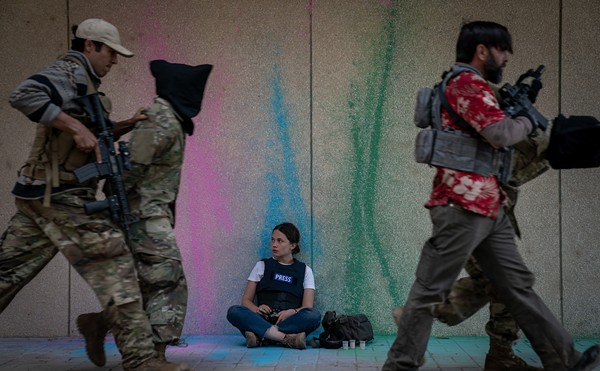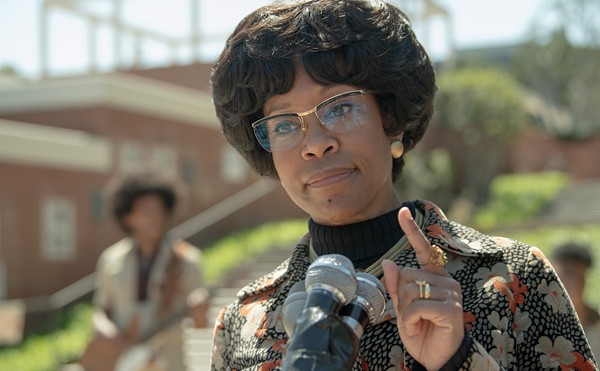In François Truffaut's magnificent 1973 homage to the power of filmmaking, La Nuit Americaine (Day for Night), a young actor (played by the director's alter ego/surrogate son, Jean-Pierre Léaud) obsessively confronts everyone he meets with one of two questions: "Are films more important than life?" (The other is "Are women magic?", perhaps equally typical of the obsessive/romantic streak in Truffaut's films.) It's not a question that Truffaut himself would have bothered asking; he spent most of his 52 years acting on the principle that there was no real difference between the two terms. From adolescent enthusiast to impassioned critic to internationally revered director (and occasional actor), Truffaut was the model cinephile, l'homme qui amait les films, transforming not only the way films were made but also how they were admired and understood. For Truffaut, cinema and life went hand-in-hand, and when he sketched out the politique des auteurs, the groundbreaking and still-controversial idea that the best directors could develop a personal style comparable to those of artists who used a pen or a brush, it may have been because he envisioned his own future as a filmmaker working precisely on those terms.
For those whose love of cinema developed in the 1970s and to whom each new Truffaut film was an annual event, as familiar a part of the film calendar as the Cannes festival or the Academy Awards, the director's death in 1984 came as a shock. More perturbing than the loss of a great artist, however, were the dwindling of his reputation and near-disappearance of his work in the era of cable and video, as film history was revised and rewritten by the likes of Miramax and Blockbuster, and "auteur" came to mean any director sufficiently famous to appear on talk shows. After too many years of neglect, a long-overdue Truffaut revival is under way, with complete retrospectives of his work in several cities (not, alas, St. Louis), the appearance of a thoughtful and informative biography (Truffaut, by Antoine de Baecque and Serge Toubiana, published by Alfred A. Knopf), a superb new recording of Georges Delerue's film music and, most important, the release by Fox/Lorber Home Video of almost half of Truffaut's 25 films on videotape, some for the first time. The first six titles — The 400 Blows, Shoot the Piano Player, Two English Girls, Love on the Run, The Last Metro and Confidentially Yours — are currently available. Jules and Jim, The Soft Skin, Stolen Kisses, Bed and Board, The Woman Next Door and the shorts Les Mistons and Antoine and Colette will follow in August.
For those unfamiliar with Truffaut's work, the best place to start is probably The 400 Blows, the 1959 film that launched the New Wave and introduced the character of Antoine Doinel, the young man who began as an exercise in autobiography but gradually developed a personality of his own in four later films. Inspired by the director's own troubled adolescence, the story of a young boy who battles parents, teachers and society in general now seems less like the rebellious exercise in style that confounded the French critical establishment and more like a humanistic classic in the tradition of Renoir and The Bicycle Thief. Truffaut's bitterness over his own experience (an unwanted child, he was raised by an indifferent mother and a man whom he eventually realized was not his real father; after a string of petty crimes and brushes with authority, he was sent to reform school) made him a lifelong champion of children's rights and created an instant sympathy with his young amateur performers. Most remarkable of all was his instant rapport with the 14-year-old Léaud, a young man who shared some of his director's youthful insubordination and whose life and career would become inextricably linked with Truffaut's. Léaud would literally grow up onscreen under Truffaut's tutelage, becoming an icon of the New Wave and reprising the character of Doinel through a series of four additional bittersweet romances. (Though the last of these, Love on the Run, is already available, it's probably best to watch it in its proper place after the August release of Antoine and Colette, Stolen Kisses and Bed and Board.)
If conventional wisdom held (with some exaggeration) that the Doinel films were Truffaut's own story, the de Baecque/Toubiana biography offers substantial evidence that nearly all of Truffaut's films were drawn from his own experiences, even those drawn from — and faithful to — literary sources.
Shoot the Piano Player, Truffaut's second feature, is a comic retelling of an American crime novel, shot in a playful style that would become a model for filmmakers ranging from Jean-Luc Godard (whose first film, Breathless, was based on a story by Truffaut) to Tarantino, but between the noir allusions, it's also a reflection of the director's love for genre movies and a commentary on the overnight success of The 400 Blows. The piano player of the title, Charlie Kohler/Edouard Saroyan (played with deadpan charm by Charles Aznavour) reacts to the gangster plot unfolding around him not with the boyish enthusiasm of a Belmondo but with a weary fatalism. If life is inevitably a tragedy, he's determined to avoid a leading role, staying on the sidelines providing its musical accompaniment.
Truffaut would return to American crime fiction only occasionally, using the simple plots of murder and revenge as a starting point for more personal stories of romance and despair rather than for comic effect. His final film, Confidentially Yours (the French title, Vivement Dimanche!, translates as "Finally, Sunday!"), was also adapted from an obscure paperback mystery, though perhaps with less ambition and passion than Piano Player. Made simply to pay respect to film noir, it's stylish but a little silly, a generic joke that runs a bit thin despite the strong presence of Fanny Ardant as a secretary trying to prove that her boss (Jean-Louis Trintignant) is innocent of a series of murders. Minor but entertaining, it ironically duplicates the complicated plots of B mysteries but not their economy, taking almost two hours to accomplish what Republic or Monogram would have wrapped up in half its length.
An enfant terrible whose attacks on France's stodgy "tradition of quality" made him a highly visible target for old enemies and rivals, Truffaut's own maturity was often thrown back at him, as if his developing style was a betrayal of New Wave enthusiasm. What critics of his later films (which were out of fashion in some ideological circles by the late '70s) usually failed to see was that Truffaut's sense of resigned humanity transcended the classical conventions that he embraced. Though the New Wave directors briefly delighted in breaking movie codes, Truffaut was more interested in transforming them, resulting in later masterpieces like The Last Metro, a surprise hit in 1980 and a film that seems considerably richer and more adventurous today than it did 19 years ago. Originally planned as a companion piece to Day for Night, Truffaut's film is a tribute to the stage and the people who work in it, but it's also one of his most ambitious works, using a historical setting to reflect on romance, sacrifice, political commitment and the arts. Set during the Occupation, with Catherine Deneuve struggling to keep her theater open in the midst of censorship, shortages, blackmail and the absence of her Jewish director/husband (who is actually hiding in the cellar, keeping track of the current production), The Last Metro is a vivid mixture of historical anecdote and Renoirlike humanism, but the maxim "Everyone has his reasons" is modified by a sense of political accountability.
Some reviewers of the recent retrospectives and the biography have expressed surprise that Truffaut was a more complex and somber figure than his popular image suggests — an image typified by his performance as the gentle alien-chaser in Spielberg's Close Encounters of the Third Kind. For those familiar with his films, this darker figure — whose history includes incarceration, depression, suicide attempts, a long string of romances and a family that almost defines "dysfunction" — could already be glimpsed in the obsessive passion of Adele H., the doomed lovers of The Woman Next Door, the morbid hero of The Green Room and, most of all, in the ménage à trois of 1971's Two English Girls, a disturbing, frequently overlooked masterpiece that ranks among Truffaut's richest works. Based on the only other novel by Jules and Jim author Henri-Pierre Roche (whom Truffaut discovered and more or less rescued from obscurity) and filmed after a period of deep depression, this tragic love story lays bare Truffaut's feelings about love, sex, death and art, wallowing in its emotions with an almost uncomfortable physicality. In a reversal of Jules and Jim's high-spirited passion, Léaud, in what is probably his finest performance, plays a young Frenchman whose innocent but ill-fated relationship with two English sisters leads to tragedy. The final scene, in which the 26-year-old Leaud, still a New Wave figurehead, looks at his reflection and declares, "I feel old," marked the end of an era, the final statement of an entire generation's romantic illusions. Only a director like Truffaut, who loved the past, loved the arts and knew how far romance and madness could drive someone, would bring such a scene to life, the only truly Proustian moment in the history of cinema. François Truffaut and Fanny Ardant on the set of his last film, Confidentially YoursBREAKING THE NEW WAVE





